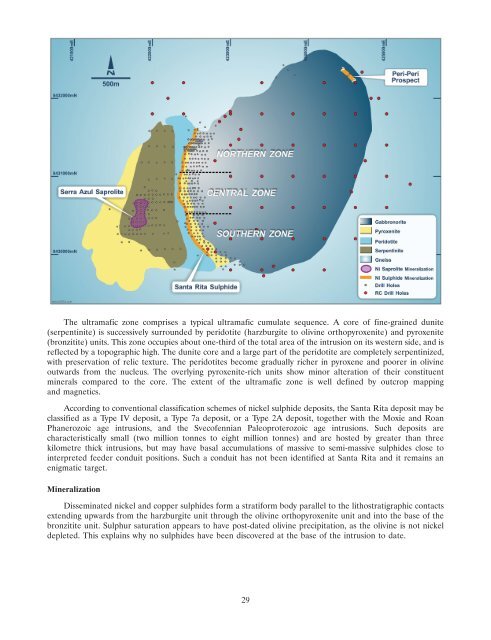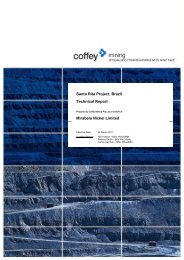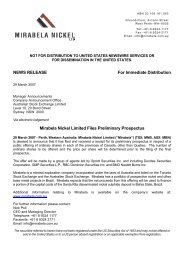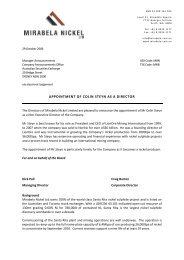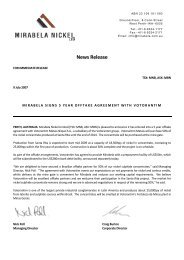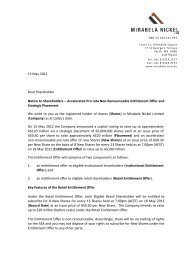COPY OF FINAL PROSPECTUS - Mirabela Nickel
COPY OF FINAL PROSPECTUS - Mirabela Nickel
COPY OF FINAL PROSPECTUS - Mirabela Nickel
Create successful ePaper yourself
Turn your PDF publications into a flip-book with our unique Google optimized e-Paper software.
25MAR200710211038<br />
The ultramafic zone comprises a typical ultramafic cumulate sequence. A core of fine-grained dunite<br />
(serpentinite) is successively surrounded by peridotite (harzburgite to olivine orthopyroxenite) and pyroxenite<br />
(bronzitite) units. This zone occupies about one-third of the total area of the intrusion on its western side, and is<br />
reflected by a topographic high. The dunite core and a large part of the peridotite are completely serpentinized,<br />
with preservation of relic texture. The peridotites become gradually richer in pyroxene and poorer in olivine<br />
outwards from the nucleus. The overlying pyroxenite-rich units show minor alteration of their constituent<br />
minerals compared to the core. The extent of the ultramafic zone is well defined by outcrop mapping<br />
and magnetics.<br />
According to conventional classification schemes of nickel sulphide deposits, the Santa Rita deposit may be<br />
classified as a Type IV deposit, a Type 7a deposit, or a Type 2A deposit, together with the Moxie and Roan<br />
Phanerozoic age intrusions, and the Svecofennian Paleoproterozoic age intrusions. Such deposits are<br />
characteristically small (two million tonnes to eight million tonnes) and are hosted by greater than three<br />
kilometre thick intrusions, but may have basal accumulations of massive to semi-massive sulphides close to<br />
interpreted feeder conduit positions. Such a conduit has not been identified at Santa Rita and it remains an<br />
enigmatic target.<br />
Mineralization<br />
Disseminated nickel and copper sulphides form a stratiform body parallel to the lithostratigraphic contacts<br />
extending upwards from the harzburgite unit through the olivine orthopyroxenite unit and into the base of the<br />
bronzitite unit. Sulphur saturation appears to have post-dated olivine precipitation, as the olivine is not nickel<br />
depleted. This explains why no sulphides have been discovered at the base of the intrusion to date.<br />
29


